Long-time bicoastal powerhouse recounts his career highlights, including gigs with Stanley Clarke and Chick Corea’s Elektric Band, to his current spot with Jimmy Kimmel Live
Exclusive interview with FBPO’s Jon Liebman
March 26, 2012
Jimmy Earl has worked professionally in Boston, New York and Los Angeles after attending Berklee College of Music and the New England Conservatory of Music. Over the course of his decades-long career, Earl has performed with Gato Barbieri, Angela Bofill, Tom Browne, Chick Corea, George Duke, Freddie Hubbard, Stanley Turrentine and many others.
He has also toured with the Crusaders, Robben Ford and Stanley Clarke and has appeared on Clarke’s If This Bass Could Only Talk and East River Drive albums.
Since 2003, Jimmy has held down the bass chair with Cleto and the Cletones, the house band for the Jimmy Kimmel Live show. He can also be seen frequently at the famed Baked Potato club in Studio City, CA, where he has performed with the likes of Dean Brown, Deron Johnson, Scott Kinsey, Simon Phillips, Jeff Richman, Steve Tavaglione and Steve Weingart. Jimmy’s solo CDs, Jimmy Earl and Stratosphere are scheduled to be re-released in the spring of 2012 on Severn Records.
FBPO: How would you describe your musical upbringing?
JE: It was pretty much a normal upbringing. My mother had my brother and me take piano lessons at an early age. Like a lot of young kids, I didn’t stick with them. At the age of 9, I was introduced to the classical guitar by my cousin and took strict classical guitar lessons for several years. During those years, I listened to the local Washington, DC, soul music radio station. Because it was the late ’60s, it exposed me to the great soul music of those times. I remember how powerful James Jamerson’s bass lines were. I was also a big Beatles fan.
FBPO: How did you transition to the bass?
JE: When I was 14 years old, I was recruited by the neighborhood rock band, which included Rex Wilson, Dan Hovey and Leigh Stevens, to play a bass guitar they had. I took to it immediately. We played songs by Cream, Rare Earth, Iron Butterfly’s “In A Gadda Da Vida” and Motown hits. Later, we moved on to more jam-band type music, such as The Allman Brothers and The Grateful Dead. I was switching between rhythm guitar and bass. We eventually got into jazz and I was mostly playing bass. When I applied to Berklee, I originally considered being a guitar major, but was advised wisely by my father to major in electric bass. I credit him for my becoming a bass player because if I had majored in guitar at Berklee, I probably would not be playing music today.
FBPO: You were in Boston for quite a while. What kind of gigs were you doing there?
JE: After high school, in 1975 and 1976, I attended Berklee College of Music. During the summer of 1976, I started gigging in dance bands based in Boston. The disco scene was in full force, so there were many clubs to play in. I worked in these types of bands, traveling up and down the East Coast for the next several years until I felt a need to play more challenging music.
I pursued the local Boston jazz/fusion scene in 1982. During that period, I was freelancing, doing all different kinds of gigs. I did weddings, casuals and anything that paid. I also played in a few local Boston punk bands. One memorable gig was on a Cape Cod whale-watching cruise, with a conga player and me on fretless bass. Our job was to call the humpback whales.
I joined jazz/fusion groups led by trumpet great Tiger Okoshi, guitarist Randy Roos, and drummer Bob Moses. I also studied jazz improvisation with Charlie Banacos. It was a very busy time of my career and musically stimulating.
FBPO: What prompted you to go to New York? How did you manage to break into the scene there?
JE: In 1985, I felt like I wanted to try the New York scene. I moved there in January of 1986 and immediately started networking. I landed some jingle sessions and a few gigs in the clubs. My friend, keyboardist Steve Hunt, recommended me for a project he was doing called the Jazz Explosion. It consisted of a three-piece rhythm section of keyboards, bass and drums, which backed up four well-known jazz artists in one concert. We would fly out to various cities across the US and do three concerts in one weekend. Some of the artists we backed up were Ramsey Lewis, Stanley Turrentine, Freddie Hubbard, Lonnie Liston Smith, Gato Barbieri and Stanley Clarke. This project kept me busy for the year.
FBPO: The music scenes in New York and LA may be similar in some ways, but are very different in others. What made you decide to switch coasts?
JE: I relocated to Los Angeles in January of 1988. I had been playing and touring with Stanley Clarke and The Crusaders, who were based in Los Angeles, and, after experiencing LA, I wanted to live and work there. Coming from the Northeast, I really enjoyed the weather and it seemed to me that living in Los Angeles provided more opportunities for a musician.
FBPO: Tell me about your experience with Stanley Clarke.
JE: I met Stanley when I was playing with the Jazz Explosion in 1986. He was doing a solo electric bass set, so the backup band sat out. During one of the concerts, he invited the band to play with him. I expected to sit out, but he said, “You’re playing too!” I never thought I would be playing bass behind another bass player, let alone the great Stanley Clarke. We had such a good time that he hired us to be in his band. It was a great experience because the band was unique. We explored a lot of musical possibilities. I think the two basses worked well because we sounded completely different from each other. I took on the supportive bass role with my five string bass tuned to a low B and Stanley played the lead bass. As long as we stayed an octave away from each other or played in unison, there was no clash. We toured Europe, the United States and South America. One of those trips included a tour of Brazil with Larry Graham on bass also. Playing with Stanley was a real treat and a wonderful learning experience.
FBPO: How did it feel replacing John Patitucci in Chick Corea’s Elektric Band, given that John was one of the original members of that group?
JE: John was actually the one who recommended me for the group when he was leaving. I was thinking to myself, “Can you cut this?” I came into the band with my own approach and didn’t try to emulate John. I think it was an adjustment for everyone because John was such a star performer in that group. We toured Europe and Japan in the spring and summer of 1993. I had a great time playing with the first Elektric Band. I came off those concerts a better musician and a much stronger player.
FBPO: How did the Jimmy Kimmel gig come about?
JE: Our band consists of Cleto Escobedo and his dad Cletes Sr. on saxes, Jeff Babko on keys, Toshi Yanagi on guitar, Jonathan Dresel on drums and me on bass. We all know each other from playing for many years in a local Los Angeles salsoul band called Cecilia Noel and the Wild Clams. Jimmy Kimmel and Cleto grew up best friends in Las Vegas. When Jimmy was putting together his late-night talk show on ABC, he called Cleto to be his house bandleader. At that time, we were all playing in a club band called Mogli. In July of 2002 Jimmy and the producers came to the club, heard us and hired us.
 FBPO: With all the shows you’ve recorded for Jimmy Kimmel Live, there must be something that stands out as being particularly unusual or funny. Any good stories?
FBPO: With all the shows you’ve recorded for Jimmy Kimmel Live, there must be something that stands out as being particularly unusual or funny. Any good stories?
JE: Almost every Halloween they have the house band dress up with a certain theme. A few years back, they had us dress up as the villains from Batman. I was assigned to be Mr. Freeze. They put me in a plastic suit and a bubble space helmet with a small hole to breathe through. Because playing bass sometimes can be like running sprints, my space helmet fogged up and I couldn’t see anything. Everyone made fun and the stage manager had to lead me off the bandstand.
FBPO: What else is keeping you busy these days?
JE: My two solo CDs, Jimmy Earl and Stratosphere are being re-released this spring on Severn Records. I am very excited about this because they have not been available for quite a while. Warwick just came out with a new Jimmy Earl Signature 5-string bass guitar. It has an ash body, maple neck, maple fingerboard and red led lights on the neck and EMG pickups. It plays like a dream!
I still perform in the local clubs with Zigaboo Modeliste, who is the drummer from The Meters; Cecilia Noel; keyboard wizard Scott Kinsey and guitarist Dean Brown to name a few. I am also working on another solo CD and studying piano.
FBPO: What lies ahead for you and your career? What else would you like to do that you haven’t accomplished yet?
JE: Just to keep playing bass for as long as I can and to continue learning new things.
FBPO: What would you be if you weren’t a bass player?
JE: Probably a hamburger chef at the In & Out, wishing I was a bass player!
Also see our exclusive FBPO interview with John Patitucci, who is mentioned here:
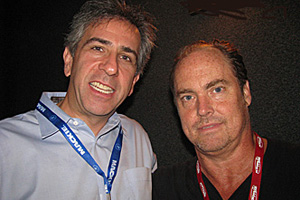


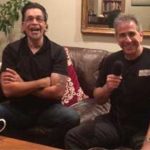
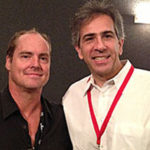
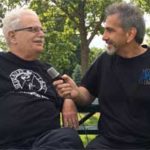
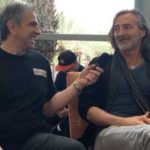

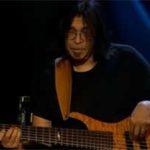
Jimmy Earl is a gentleman and a great bassist. I caught him at the Baked Potato last year. They sounded great and I hope I can catch him there agin this year. Jimmy is easy going and shared some insights to bass strings. I switched to the strings he uses and he is right; they are great. Thanks for a great evening. Hope to see you again soon Jimmy. Hope Warwick makes left handed basses. I want to check out your signature bass. Sure sounded good.